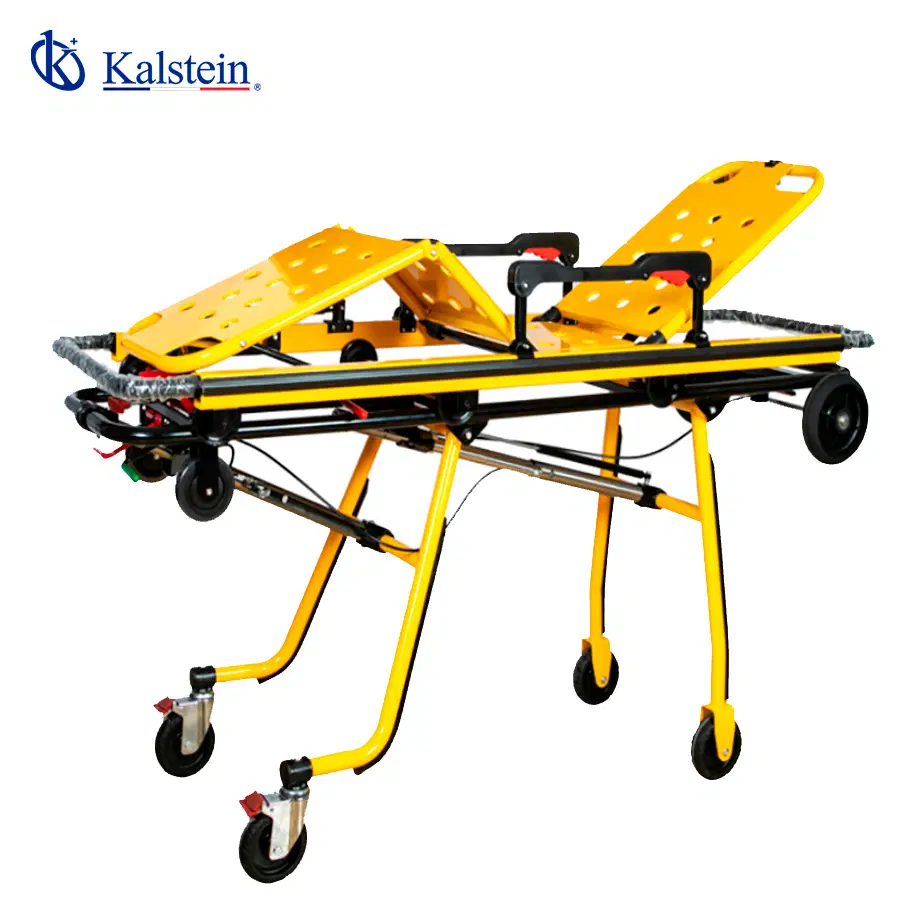Medical transport stretchers are essential tools in any clinic or hospital. Their main function is to provide a safe and comfortable means of moving patients within healthcare facilities.
These stretchers need to be both functional and efficient while also offering maximum comfort to the patient. In this article, we will explore how to use these stretchers to achieve the best results, including practical tips, step-by-step tutorials, and the latest trends in medical technology.
If you’re seeking a blend of innovation and quality, you’ve come to the right place. At https://kalstein.co.nz/category-product/medical-line/medical-transfer-stretcher/ we offer you the luxury to explore our exclusive catalog of laboratory equipment. We manufacture each piece of equipment with a level of excellence. Our intuitive and agile online shopping channels are designed for your convenience, ensuring the friendliest prices. Don’t hesitate any longer, we bring science to life, it’s time to become part of our community. https://kalstein.co.nz/
Choosing the Right Stretcher
When choosing a transport stretcher, it is crucial to consider several factors to ensure it meets the needs of your clinic and your patients. First, evaluate the stretcher’s weight capacity to make sure it can support all types of patients you attend to. Additionally, check the mobility features, such as swivel wheels and brakes, which are vital for safe and efficient transport.
Another important aspect is the stretcher’s material. Stainless steel stretchers are durable and easy to disinfect, while aluminum ones are lightweight and easy to maneuver. Also, consider height adjustment options and the backrest inclination, which can significantly improve patient comfort and facilitate the work of medical staff.
Preparing the Stretcher for the Patient
Before using the stretcher, it is essential to prepare it properly to receive the patient. Start by checking that all parts of the stretcher are in good condition, especially the wheels and brakes. Then, adjust the stretcher’s height to a comfortable level for both the patient and the transport staff. This not only facilitates moving the patient onto the stretcher but also prevents possible injuries.
Ensure the stretcher is clean and disinfected, using approved products for medical surfaces. Place a clean, comfortable sheet on the stretcher to enhance the patient’s experience. Additionally, have extra blankets and pillows on hand to provide more comfort and support, especially during long transports.
Safe Patient Transfer Techniques
Safe patient transfer is a priority. To move the patient from the bed to the stretcher, use proper techniques to avoid injuries for both the patient and the staff. A common technique is the bridging maneuver, where the patient is slightly lifted while the staff places the stretcher next to the bed. Then, with smooth and coordinated movements, the patient is transferred to the stretcher.
Another effective technique is using sliders or transfer boards, which facilitate the patient’s movement without the need to lift them completely. Make sure to communicate constantly with the patient during the process, explaining each step and ensuring they feel comfortable and secure at all times.
Adjusting the Stretcher for Greater Comfort
Once the patient is on the stretcher, it is crucial to make additional adjustments to ensure their comfort. If the stretcher has an adjustable backrest, raise it slightly so the patient can be semi-upright, which can be more comfortable and allows better interaction with the surroundings.
Use safety straps if the stretcher includes them, making sure they are snug but not too tight. This prevents accidental falls during transport. Place additional pillows under the patient’s head and knees to improve support and reduce pressure on sensitive areas.
Using Transport Stretchers in Emergency Situations
In emergency situations, speed and efficiency are crucial. Transport stretchers should always be ready for immediate use. Keep a stretcher equipped with all necessary accessories near the emergency entrance. Ensure that all staff are trained in the use of the stretcher and in safe transfer techniques.
During an emergency, communicate instructions clearly to the team and coordinate movements to avoid mistakes. Use the quick adjustment features of the stretcher, such as height change and backrest inclination, to rapidly adapt the stretcher to the patient’s needs and facilitate access to medical equipment.
Maintenance and Care of Transport Stretchers
Regular maintenance of stretchers is essential to ensure optimal functioning and prolong their lifespan. Conduct periodic inspections to detect any wear or damage to the wheels, brakes, and adjustment mechanisms. Lubricate moving parts according to the manufacturer’s recommendations and replace any defective components immediately.
Proper cleaning and disinfection are crucial to prevent infections. Use appropriate disinfectant solutions to eliminate any trace of pathogens. Follow a cleaning protocol after each use, paying special attention to frequently touched areas. Additionally, store stretchers in a dry and clean place to avoid dust accumulation and bacterial growth.
Optimizing the Use of Transport Stretchers
Efficiency and comfort in the use of medical transport stretchers depend on proper selection, meticulous preparation, safe transfer techniques, personalized patient adjustments, quick response in emergencies, and rigorous maintenance. By following these practical tips and step-by-step tutorials, you can ensure that the stretchers in your clinic provide the best results, improving the patient experience and facilitating the work of medical staff.
The latest trends in medical technology and recent advances in medical research have led to the development of more advanced and comfortable transport stretchers. Stay updated with these developments to always offer the best care to your patients.

